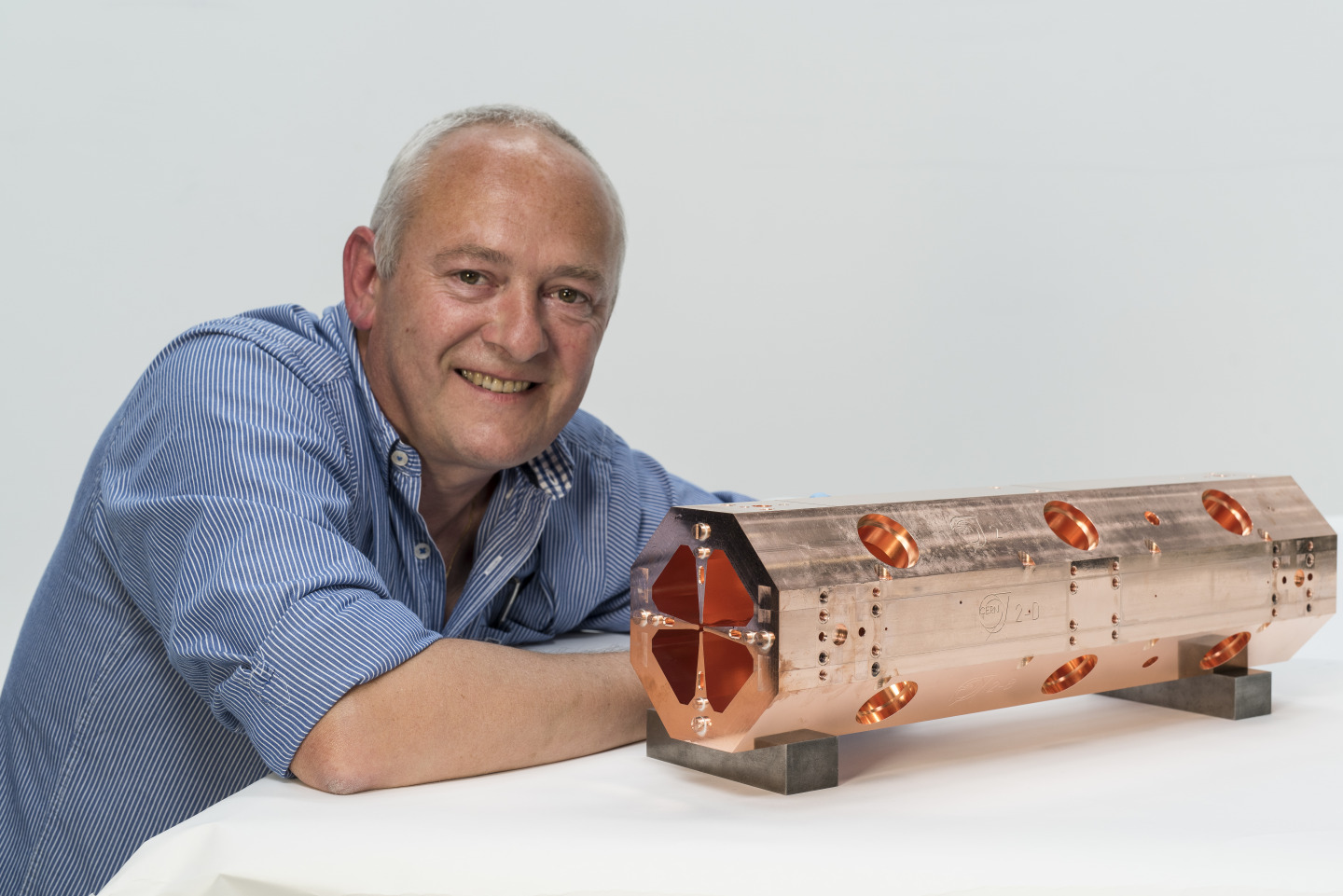CERN, home of the 27-kilometre Large Hadron Collider (LHC), is developing a new particle accelerator just two metres long.
The miniature linear accelerator (mini-Linac) is designed for use in hospitals for imaging and the treatment of cancer. It will consist of four modules, each 50cm long, the first of which has already been constructed. “With this first module we have validated all of the stages of construction and the concept in general”, says Serge Mathot of the CERN engineering department.
Designing an accelerator for medical purposes presented a new technological challenge for the CERN team. “We knew the technology was within our reach after all those years we had spent developing Linac4,” says Maurizio Vretenar, coordinator of the mini-Linac project. Linac4, a larger accelerator designed to boost negative hydrogen ions to high energies, is scheduled to be connected to the CERN accelerator complex in 2020.
The miniature accelerator is a radiofrequency quadrupole (RFQ), a component found at the start of all proton accelerator chains. RFQs are designed to produce high-intensity beams. The challenge for the mini-Linac was to double the operating frequency of the RFQ in order to shorten its length. This desired high frequency had never before been achieved. “Thanks to new beam dynamics and innovative ideas for the radiofrequency and mechanical aspects, we came up with an accelerator design that was much better adapted to the practical requirements of medical applications,” says Alessandra Lombardi, in charge of the design of the RFQ.
The “mini-RFQ” can produce low-intensity beams, with no significant losses, of just a few microamps that are grouped at a frequency of 750 MHz. These specifications make the “mini-RFQ” a perfect injector for the new generation of high-frequency, compact linear accelerators used for the treatment of cancer with protons.
And the potential applications go beyond hadron therapy. The accelerator’s small size and light weight mean that is can be set up in hospitals to produce radioactive isotopes for medical imaging. Producing isotopes on site solves the complicated issue of transporting radioactive materials and means that a wider range of isotopes can be produced.
The “mini-RFQ” will also be capable of accelerating alpha particles for advanced radiotherapy. As the accelerator can be fairly easily transported, it could also be used for other purposes, such as the analysis of archaeological materials.
Read more here

